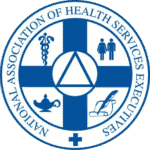Federally Qualified Health Centers (FQHCs) have come a long way in the last decade. In the 1960s, there were only eight FQHCs in the U.S. By 2001, that number had jumped to 748 facilities at 4,128 locations around the country, serving 10 million patients. The number continues to grow along with federal funding for these organizations that serve such an important role in our healthcare delivery continuum. Today there are more than 1,400 organizations with 11,200 locations serving 29 million patients each year.
Over the intervening years, how have FQHCs evolved? What healthcare trends have affected these facilities tasked with serving underserved and rural communities? How have these organizations contributed to the American healthcare delivery system and what can we expect in the future?
Changing Times for FQHCs
Like all healthcare delivery models, FQHCs have evolved over the past decade as external trends influenced how these organizations provide care. The Commonwealth Fund National Survey of FQHCs studied these changes and their impact on patients and the quality of care they receive.
The ACA
The Affordable Care Act (ACA) changed reimbursement for these organizations by increasing federal funding and expanded care delivery under these models, as states took advantage of expanded Medicaid eligibility. These changes increased patient access to care while decreasing the number of uninsured patients the health centers see. The Commonwealth study showed that the number of patients seen by FQHCs increased from 21.7 million in 2013 to 27.2 million in 2017 and over 29 million in 2020.
Expanded Access to Care
As FQHCs grew over the past decade, the healthcare paradigm shifted to include an emphasis on a more proactive model of care widely known as population health. These models educate specific patient populations with chronic care conditions about preventative treatments to lessen hospital readmissions. FQHCs fit firmly within these models as they offer expanded access to care for entire communities in a fully integrated setting. Many FQHCs provide walk-in services dba access-health, wellness visits, and even weekend telemedicine, or virtual visits, lessening the burden and costs on health center E.R.s.
In addition to population health, FQHCs have participated in some of the most innovative care models in the nation from fee for service, to performance and quality. The goal of these models is to cut costs, improve healthcare quality, and increase patient satisfaction. From accountable care models to patient-centered medical homes, FQHCs have been at the forefront of new models for coordinated, efficient, evidence-based care models.
Health Technology
FQHCs continue to leverage technology to improve the quality of care. Healthcare I.T. is used for more than revenue cycle management, but also to provide the patient with access to data that improves their health. Over the past decade, electronic health records (EHRs) have automated preventative care by generating lists of patients that are due for checkups. Online prescriptions and the use of these tools for care coordination are just some of the benefits that are now standardized in the industry. The community healthcare market knows that most every patient has a cell phone providing a means to message them.
The Challenges of the Next 10 Years
Staffing remains one of the critical challenges of FQHCs, and that trend is expected to continue. Growing staffing shortages reflect the increasing demand for services, coupled with a general labor shortage of qualified clinical staff.
Professional staffing agencies such as UHC Solutions can help FQHCs overcome these challenges. Our team has a solid track record of 22 years helping community health organizations find talent, from health system prepared CEOs to front line clinical teams. Talk to us to prepare for the decade to come.





